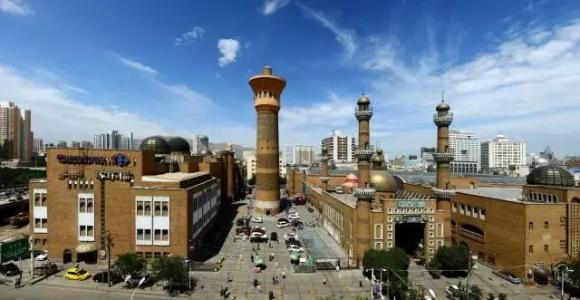State Support and Input
4 min readXinjiang is endowed with vast land and rich natural resources. However, before liberation, Xin jiang’s productivity was hampered by the backward feudalist relations of production. In addition, all the governments there in modern history were incompetent, closed-minded and conservative, fighting wars from time to time. As a result, Xinjiang’s economy was developing at a snail pace, and there was a big shortage of material goods, leading to extreme poverty among people of all ethnic groups. At that time, Xinjiang’s agricultural technology was backward and farm produce output very low. On the eve of the liberation, Xinjiang only had a unit yield of 65,10 and 29 kilograms for grains, cotton and oil crops respectively, and the per capita grain possession was only 195 kilograms. As to animal husbandry, the operating methods were extensive, and the herdsmen led a harsh nomadic life pursuing good pasture. Modern industry was virtually non-existent, as Xin jiang then only had 14 machine-based plants, all in very small scale, and the rest were hand-made workshops or mills. In 1949, the agricultural and industrial total output value in Xin jiang was merely some 400 million yuan, of which 98 million yuan was industrial output value, accounting for 22.5% of the total. There was not even an inch of railway in Xin jiang; what it had at that time were only several makeshift highways, and transport was mainly conducted on the back of camels or donkeys. As to civil aviation, Xin jiang only had three nominal airports(Hami, Dihua and lli) and one flight route linking them.

After the peaceful liberation of Xin jiang, people of all ethnic groups there were eager to speed up economic development and change the poor and backward situation. In early 1950s, despite the extremely harsh conditions, the CPC led people of different ethnic groups in Xinjiang to undertake great social transformations. As a result, the socialist system was built up, productivity was emancipated, people’s initiative and creativity for production were set free in an unprecedented way, and the national economy resumed and developed rapidly. In 1952, the total agricultural and industrial output value in Xinjiang reached RMB 1.07 billion yuan.
However, given the low level and poor foundation of the productivity in Xinjiang, it was very difficult to quickly change the poor and backward outlook there through local efforts only. One advantage of the regional ethnic autonomy in China is that the self-ruleorgans are in a position to develop local economy and culture in a relatively independentway, while the state organs at higher levels may mobilize resources from all sides to help and support the autonomous areas, so that all ethnic groups can develop on an equal basis and achieve common prosperity. Over the past sixtyodd years, the Chinese government has always regarded speeding up economic development in minority areas as an important task and rendered tremendous financial and material support to aid Xin jiang’s development.

With the unfailing support of the state, Xinjiang has seen large-scale investment and economic development over the years. From 1950 to 2001, Xinjiang’s fixed asset investment amounted to RMB 501.515 billion yuan, of which RMB 266.223 billion yuan wasfrom the central government, accounting for 53.1% of the total. During the same period, over 90,000 projects were completed and put in operation, including 178 large and medium-sized ones and many with major impact on Xin jiang’s economic development, which laid a solid foundation for its sustained economic growth. Preliminary statistics suggested that from 1955, when the autonomous region was founded, to 2004, the fiscal subsidies provided by the central government to Xinjiang added up to RMB 180.492 billion yuan. Particularly, the general fiscal subsidies that the Central Government provides to Xin jiang is growing year by year since 1996, as the Central Government’s financial strength improves and the strategy of developing the west is carried out. Xin jiang received RMB 5.007 billion yuan in general fiscal subsidies in 1996, RMB 8.012 billion yuan in 1998, RMB 11.992 billion yuan in 2000, RMB21.795 billion yuan in 2002, and RMB 28.271 billion in 2004. The state has also stepped up financial input and support for Xin jiang through various types of sector-based or minority-preferential fiscal transfer payment, and loans from international financial institutions and foreign governments.

In order to quickly change the picture of backward production and human resources shortage in Xinjiang,a huge number of college and technical school graduates, frontierassisting youngsters and decommissioned military people from Chinese inland have come to Xin jiang and taken part in local development since 1950s. Quite a few plants and companies left big cities which had much better living and productive conditions, moved west and resettled down in Xinjiang in order to support the frontier development. Such plants and companies include Shanghai Yihua Iron and Steel Mill, Shanghai Fuhua Knitwear Plant and Tianjin Municipal No.4 Construction Company. In recent years, the CPC and the government have organized pair support to Xinjiang from economically advanced inland provinces and regions, which involves a variety of areas including industry, agriculture, commerce and trade, science and technology, human resources development, culture, education and health. In 1999, the state decided to carry out the strategy of developing China’s west. The Central Government has further increased financial input to the west and implemented a series of preferential policies, which will immensely facilitate the development and prosperity of all ethnic groups in Xin jiang.








